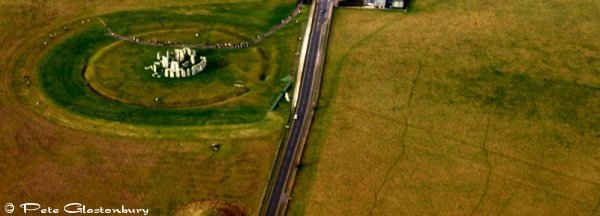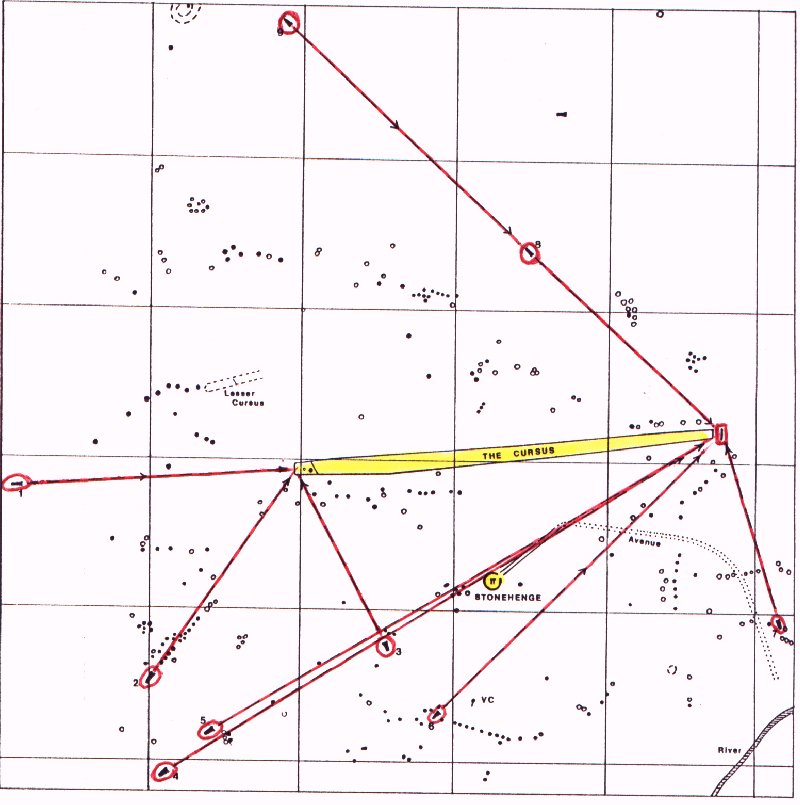
TRAVEL: Buses run throughout
the day from Salisbury Railway Station and Market Square to Amesbury and
Stonehenge (Wilts & Dorset: tel 01722.336855). Direct trains
to Salisbury include departures from Waterloo (Central London), Exeter,
Cardiff, Bristol, Bath, Portsmouth and Bournemouth. Road distances
between Avebury and Stonehenge are 24 miles via Devizes, 29 m via Marlborough.
OPEN every day except 24-26 December
and 1 January. Opening hours:
2 January -15 March 09.30-1600; 16 March-31 May 09.30-1800; 1 June-31 August
09-1900; 1 Sept-15 October 09.30-1800; 16 -23 October 0930-1700; 24 October-31
December 09.30-1600. Last admissions 30 minutes before closing.
ADMISSION: £6.40
adults; £5.10 senior citizens and other concessions;
£3.20 for children aged under 16 (children under 5 free);
family ticket (2 adults & 3 children) £16.
Admission free to members of English Heritage and the National
Trust.
Car and coach park free; toilets; access for disabled; gift shop; light
refreshments available at 'Stonehenge Kitchen'.
MUSEUMS: None on site at present,
but there are excellent collections at (1) Salisbury Museum in Cathedral
Close (01722.332151), and (2) at Devizes in Long Street (Wiltshire
Archaeological Society: 01380.727369)
TOURIST INFORMATION (hotels etc):
Amesbury 01980.622833; Salisbury 01722.334956
GUIDED TOURS:
Special private tours of the monument
including out-of-hours visits to the interior of Stonehenge can be arranged
with Stonehenge guides (but note that for visits to the interior of Stonehenge
considerable advance notice is normally required).
Telephone + 44. (0)1225.862482 to arrange your tour.
WHEREABOUTS OF THE PRINCIPAL
NEARBY MONUMENTS:
The site of Stonehenge is surrounded by 1500 acres of land, cared for
by the National Trust, with excellent marked walks. An integral part of
the Stonehenge complex is the Late-Neolithic bank-and-ditch
AVENUE. It begins outside the circular ditch near
the Heel Stone and goes north-east (more exactly on a bearing of 49 degrees
east of north) for some 400 metres, after which it turns and heads towards
the River Avon (see dotted parallel lines on the map). Otherwise,
the nearest Stone-Age monument is the
STONEHENGE CURSUS, a mile-long Middle
Neolithic earthwork, up to 100 metres wide, a short walk just north of
Stonehenge and over 5000 years old. It is always open at no charge.
See map, where it is marked in YELLOW
 The map indicates the known Neolithic long barrows (circled in red)
which are within sight of the Cursus and also shows the Bronze Age
round barrows. All 10 of the 10 long barrows within sight
of the Stonehenge Cursus are aligned on either the western end or
the eastern end of the cursus which proves that these long barrows
post-date the building of the cursus. Therefore, it was the building
of the cursus which prompted the subsequent positioning of these long barrows.
The Cursus was built about 5300 years ago. An explanation for the
design and location of the Stonehenge Cursus which accords with known archaeological
and scientific data and anthropological research is given in the book
Stonehenge: The Secret of the Solstice whose details are on the
books page.
The map indicates the known Neolithic long barrows (circled in red)
which are within sight of the Cursus and also shows the Bronze Age
round barrows. All 10 of the 10 long barrows within sight
of the Stonehenge Cursus are aligned on either the western end or
the eastern end of the cursus which proves that these long barrows
post-date the building of the cursus. Therefore, it was the building
of the cursus which prompted the subsequent positioning of these long barrows.
The Cursus was built about 5300 years ago. An explanation for the
design and location of the Stonehenge Cursus which accords with known archaeological
and scientific data and anthropological research is given in the book
Stonehenge: The Secret of the Solstice whose details are on the
books page.
.WOODHENGE, which is 3800 years old, dates from the Early
Bronze Age. It is about 2 miles east of the Stonehenge Cursus.
When built, it consisted of a series of six concentric timber rings
oval in shape and open at the north-east to midsummer sunrise. It
was surrounded by a henge ditch and bank with a NE causeway. Today
the positions of the timbers are marked by concrete posts. Excavated in 1930.
Five miles by road from Stonehenge on the A345 road to Marlborough,
Woodhenge overlooks the adjacent henge monument known as Durrington Walls. Woodhenge
is always open and free. Grid reference SU 151 434.
Stonehenge Riveside Project
